Minoxidil Before and After: Real Results and Photos
Table of Contents
About Minoxidil

Minoxidil is a medication that is used to treat hair loss. It was originally developed as a medication to treat high blood pressure, but it was discovered that it could also promote hair growth. It is available as a topical solution or foam that is applied directly to the scalp.
Minoxidil works by widening blood vessels in the scalp, which increases blood flow and nutrient delivery to hair follicles. This can help to stimulate hair growth and prevent further hair loss. It is most effective for individuals with androgenetic alopecia, which is a hereditary condition that causes hair loss in both men and women.
It is important to note that minoxidil is not a cure for hair loss and it may not work for everyone. It is also important to use minoxidil as directed and to be patient, as it can take several months to see results. Users will have to continue minoxidil treatment to maintain any hair growth that occurs.
Keep reading to find out how minoxidil works, its potential side effects, and how to use it. Before I get into that, let’s look at some before and after photos of minoxidil treatment.
30 Minoxidil Before and After Photos
#1:

#2:

#3:
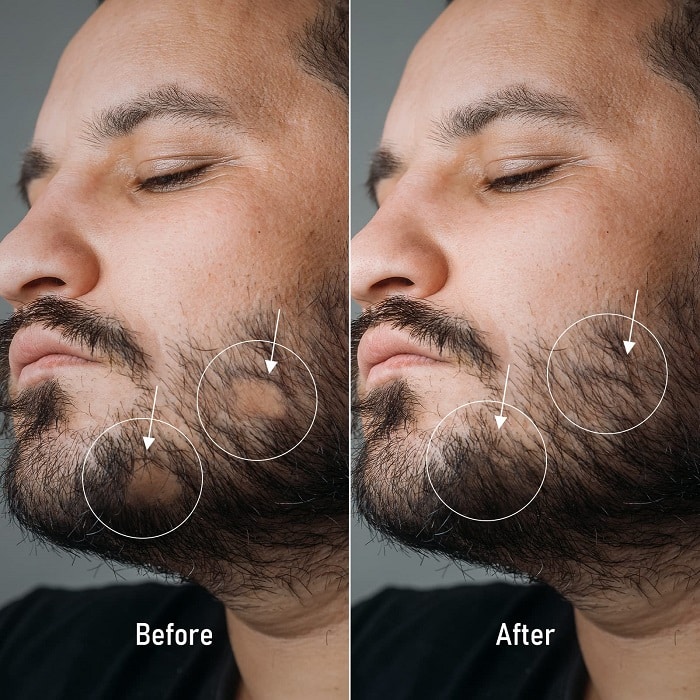
#4:
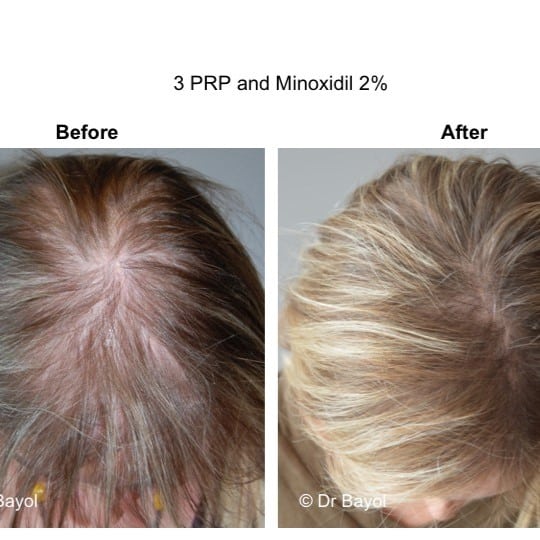
#5:
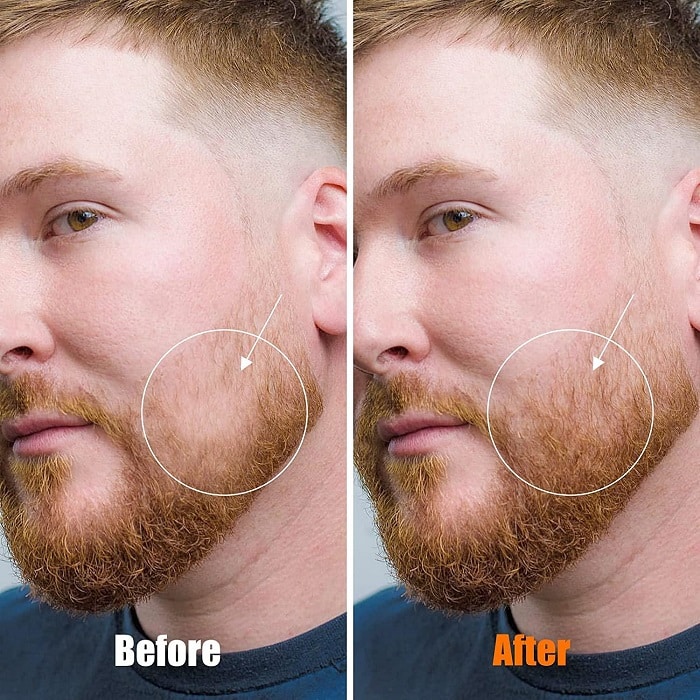
#6:
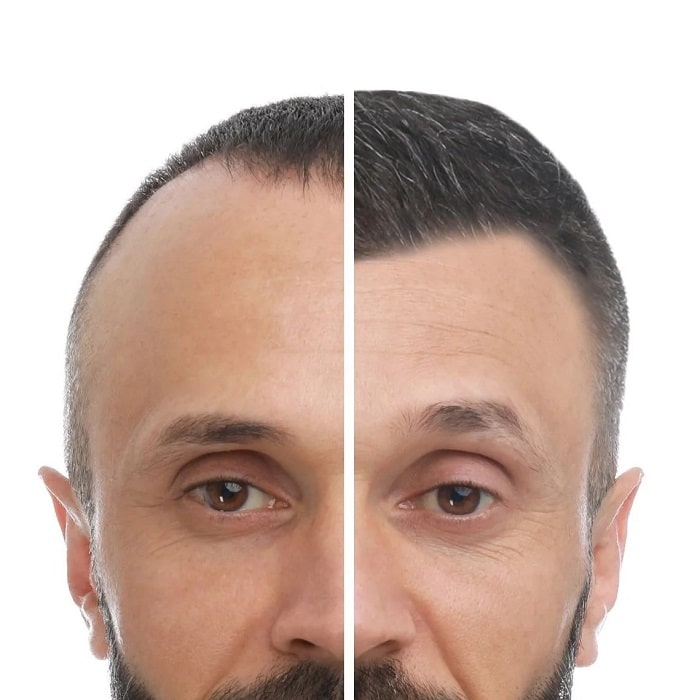
#7:
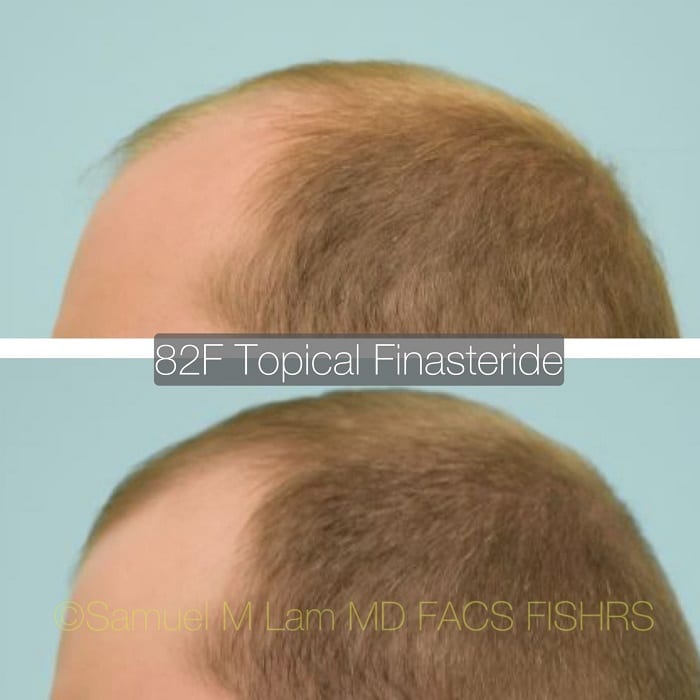
#8:
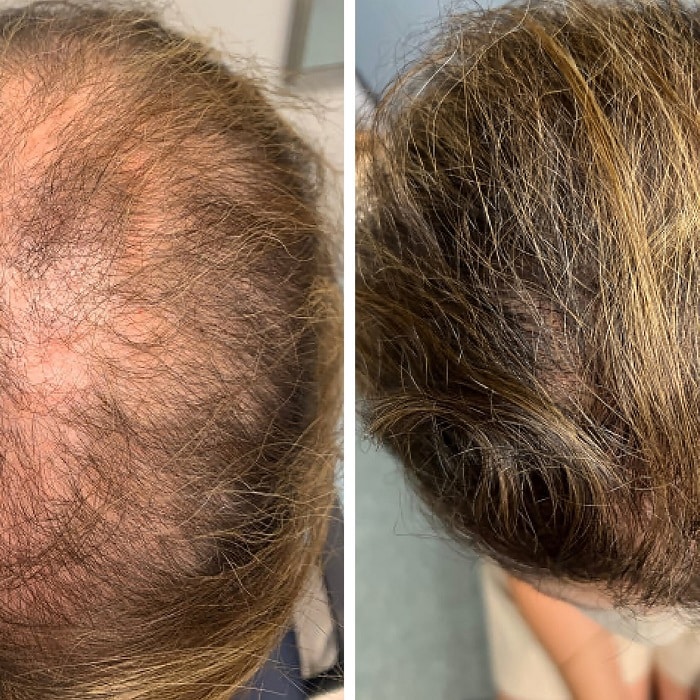
#9:
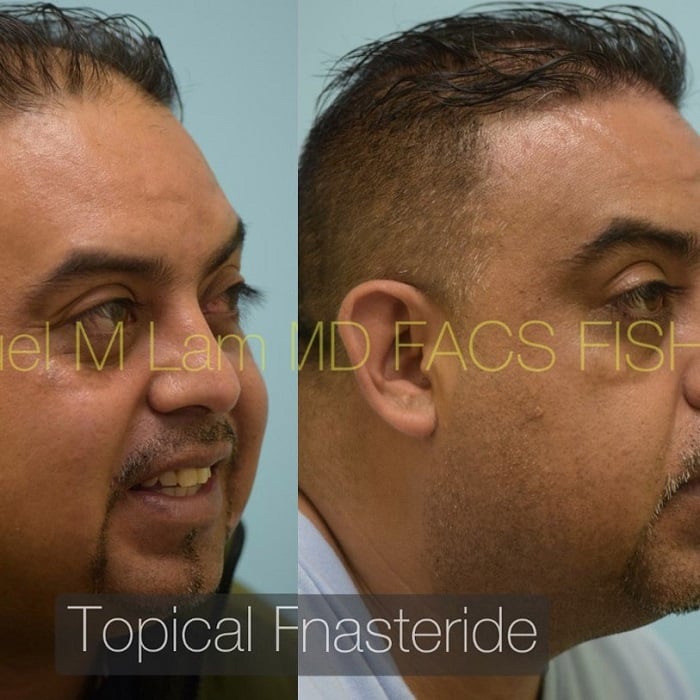
#10:
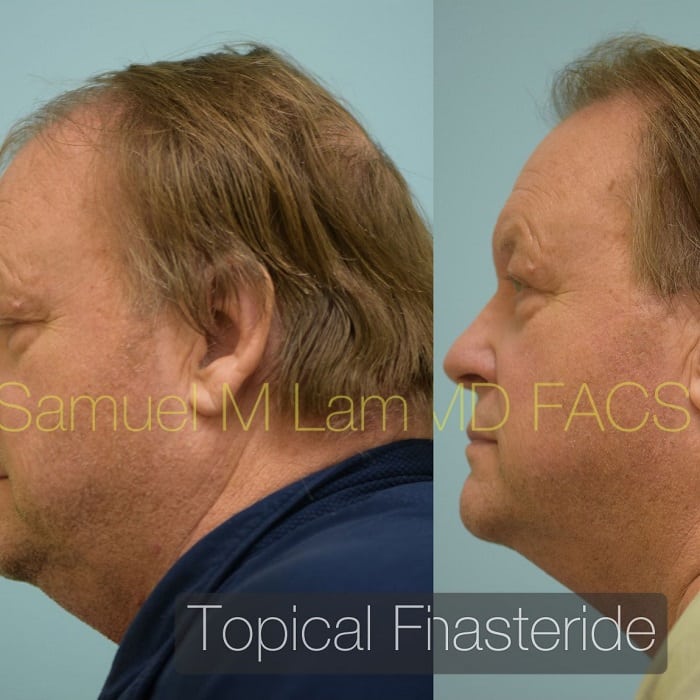
#11:
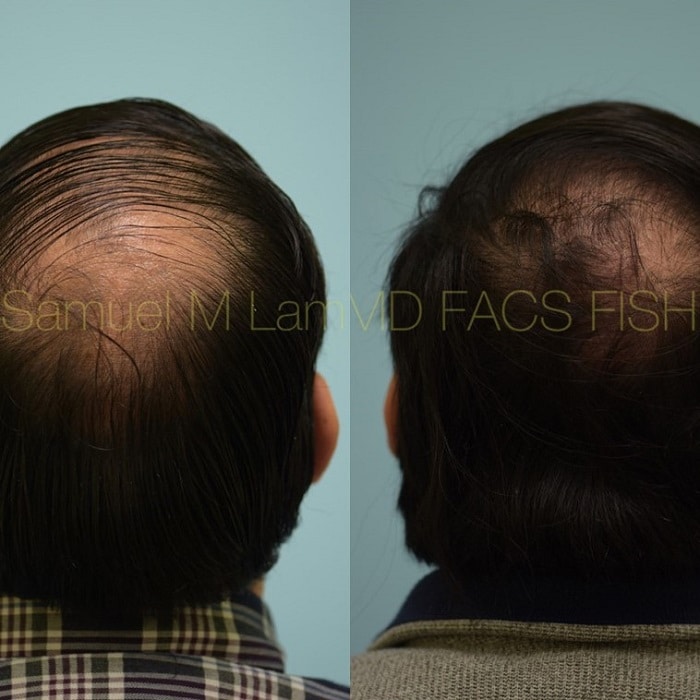
#12:
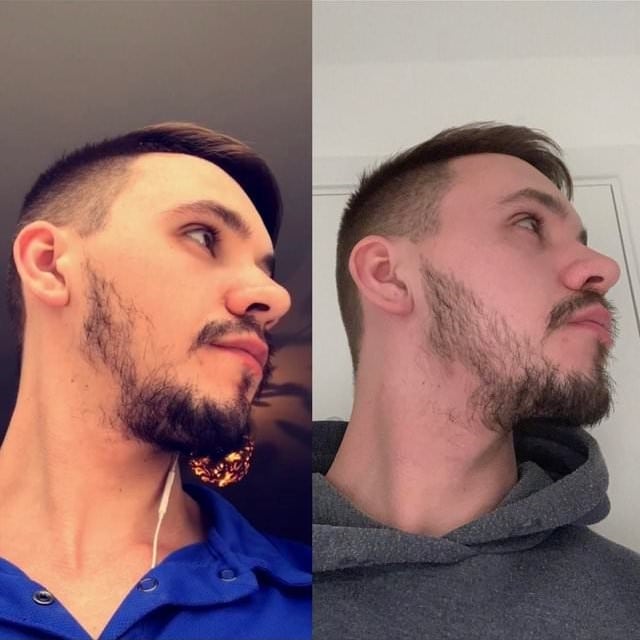
#13:
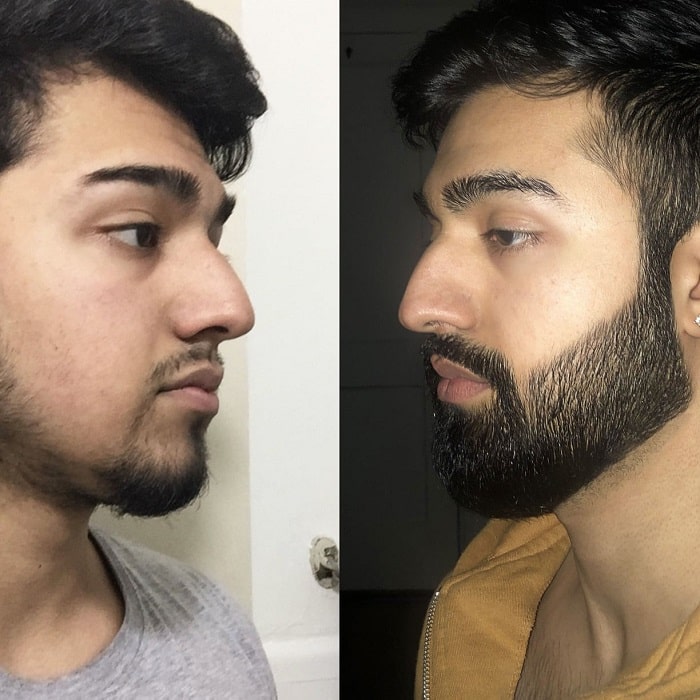
#14:

#15:
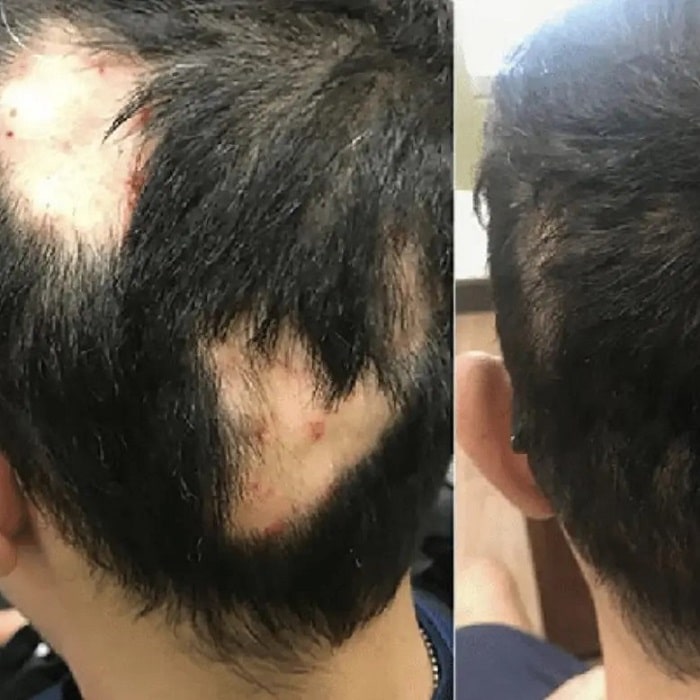
#16:
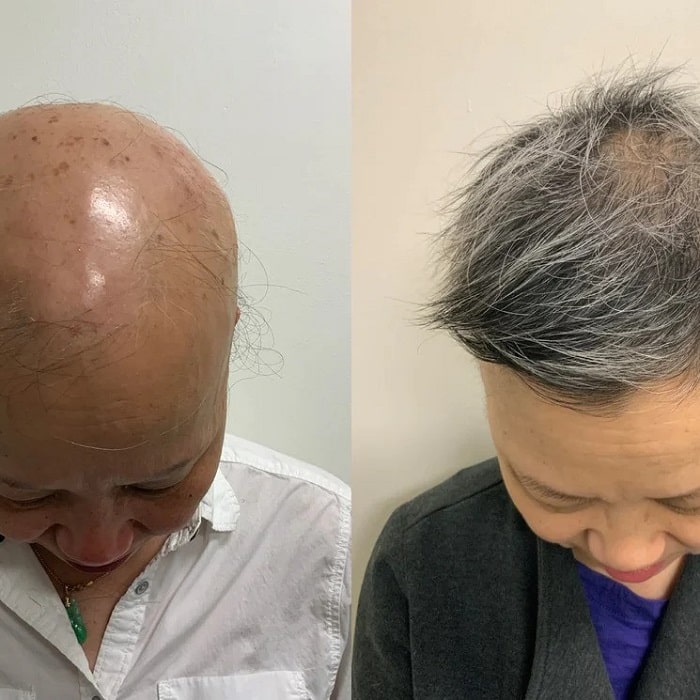
#17:
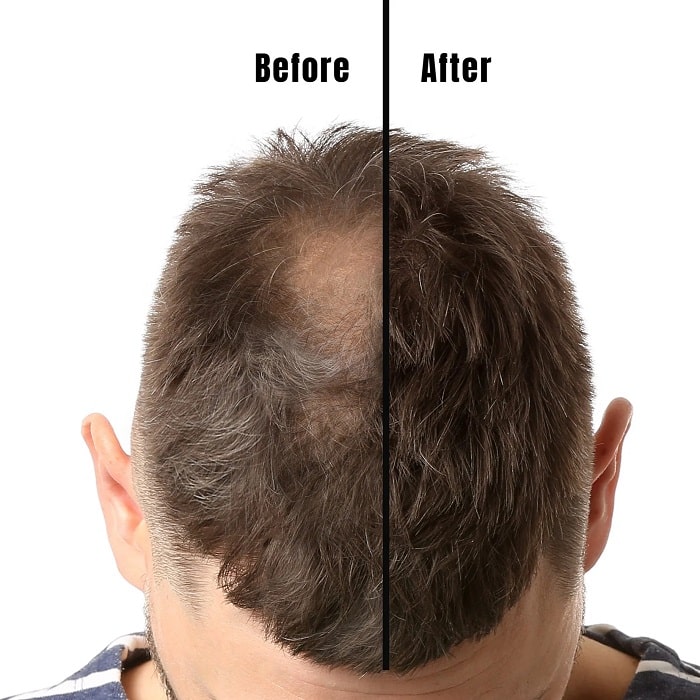
#18:
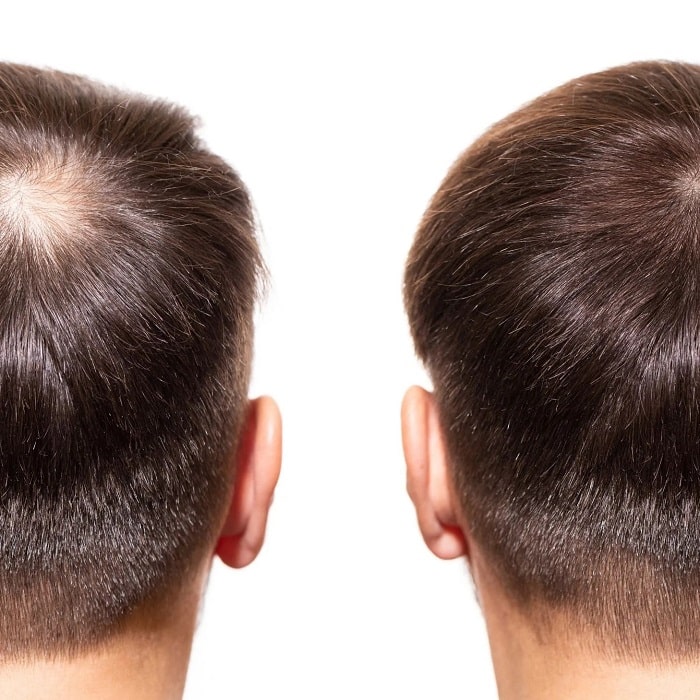
#19:
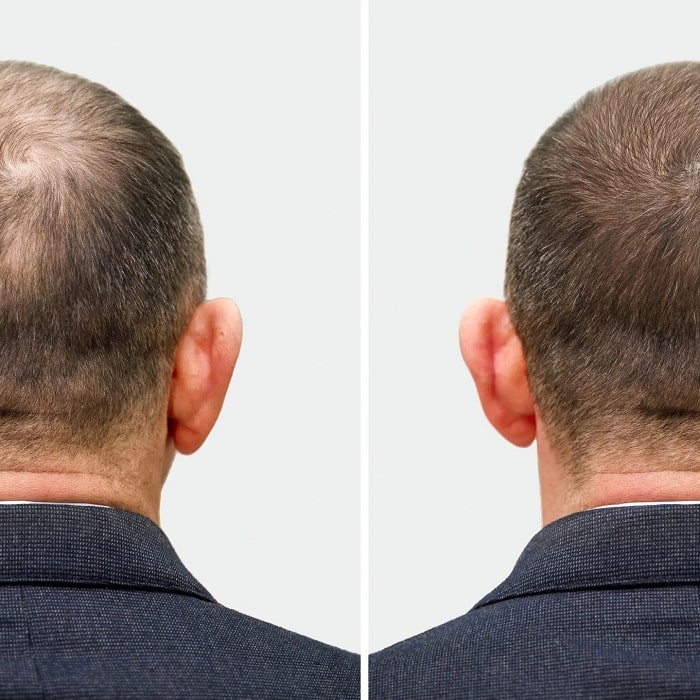
#20:
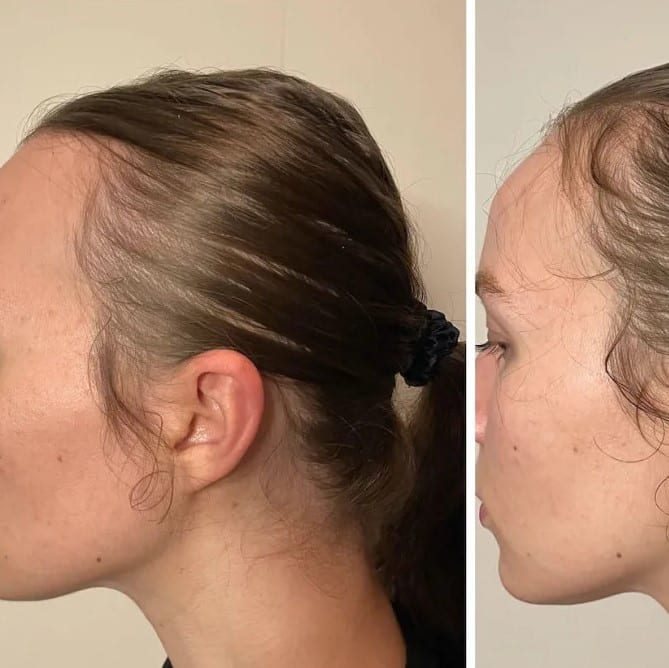
#21:
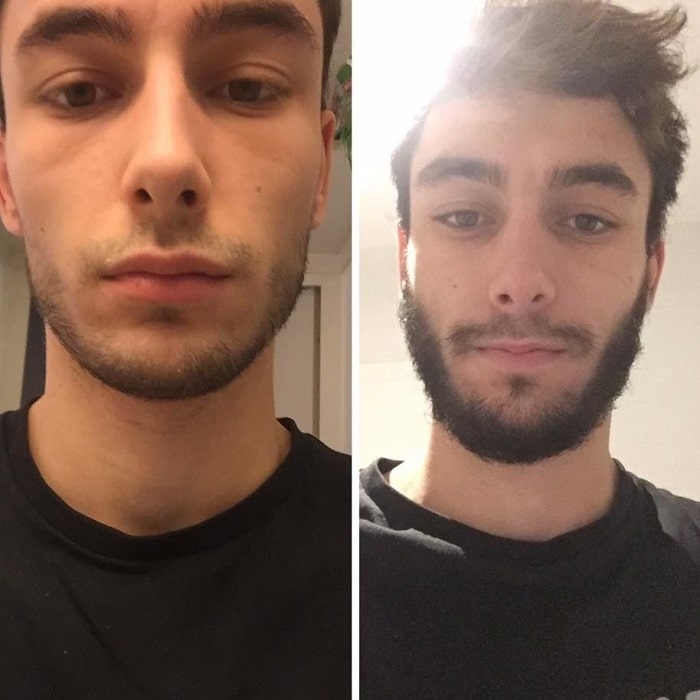
#22:
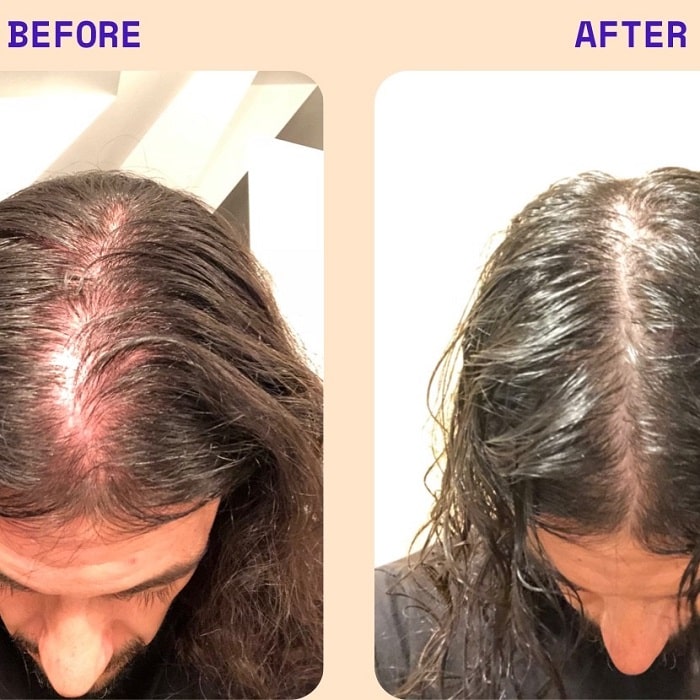
#23:
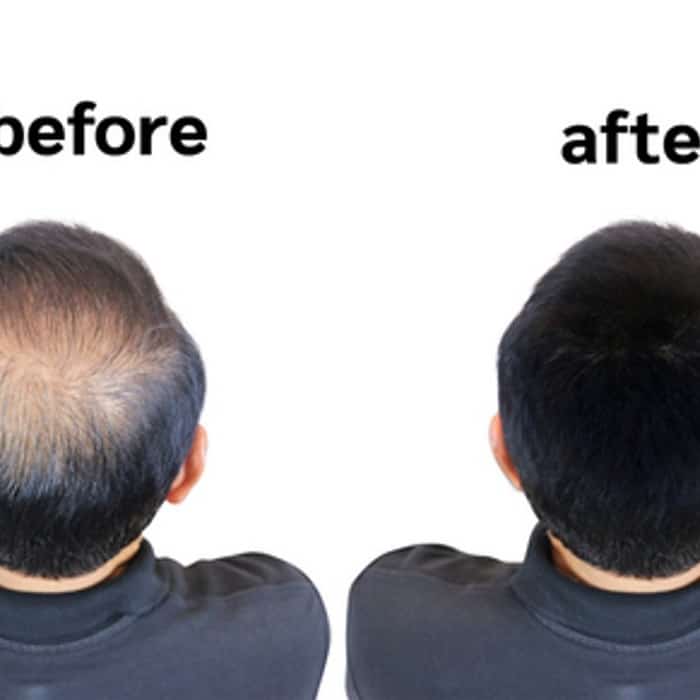
#24:
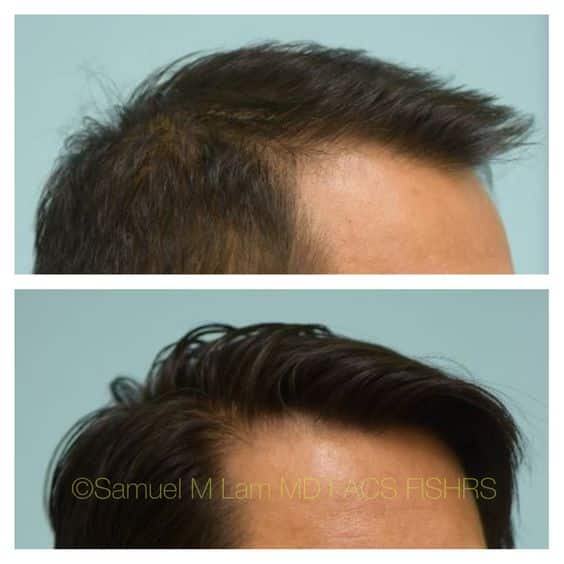
#25:
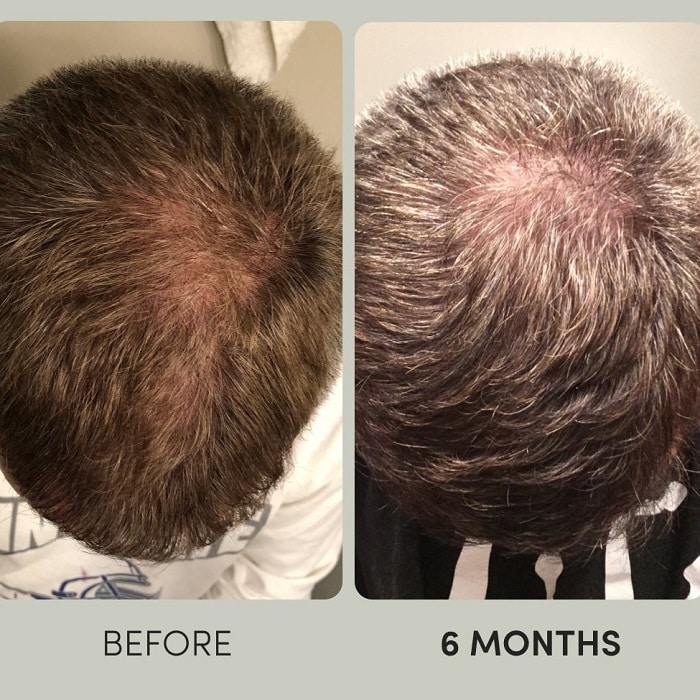
#26:
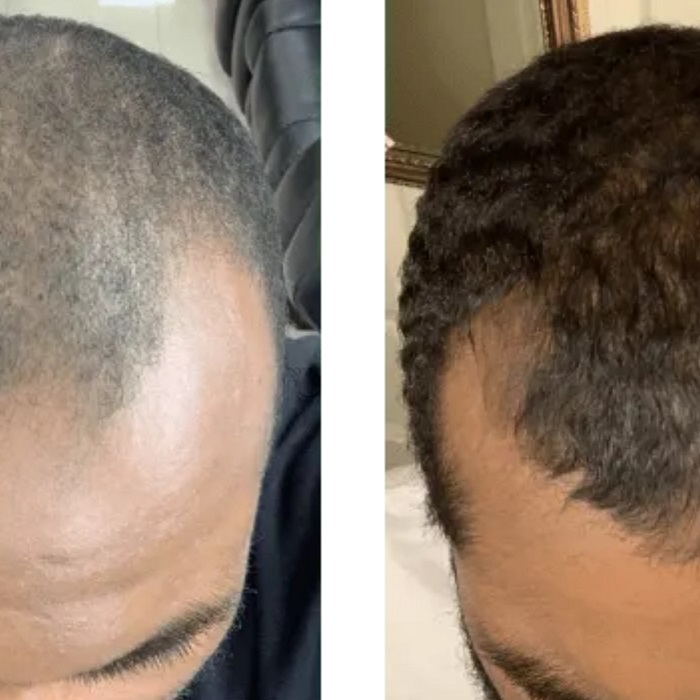
#27:
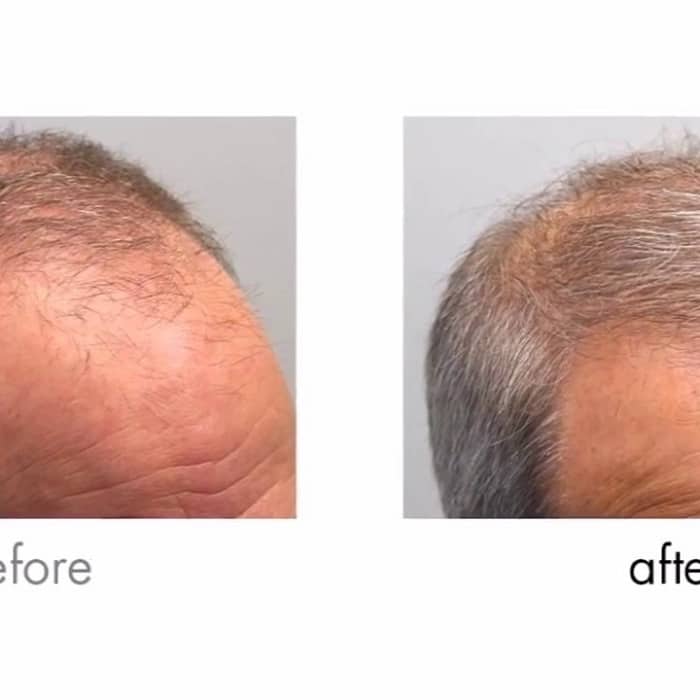
#28:
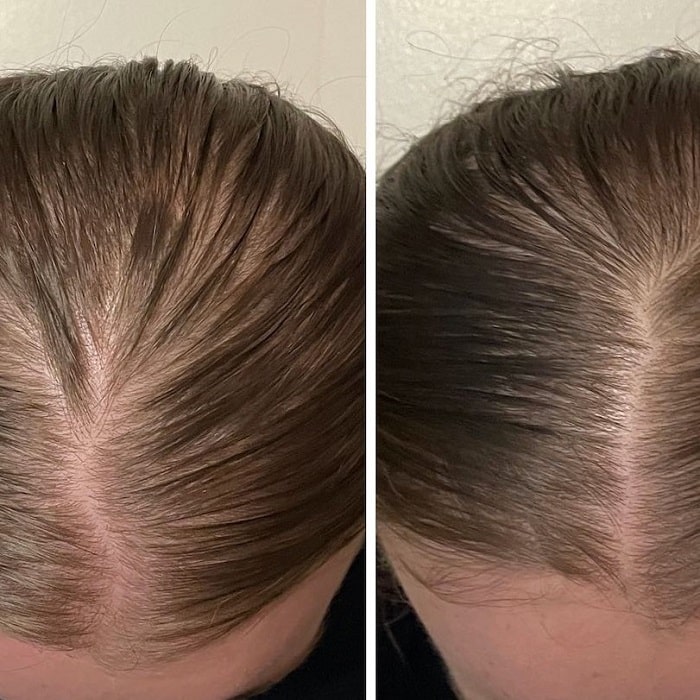
#29:
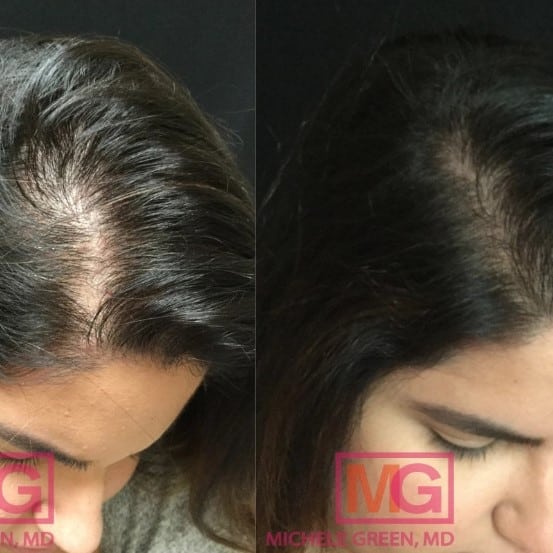
#30:
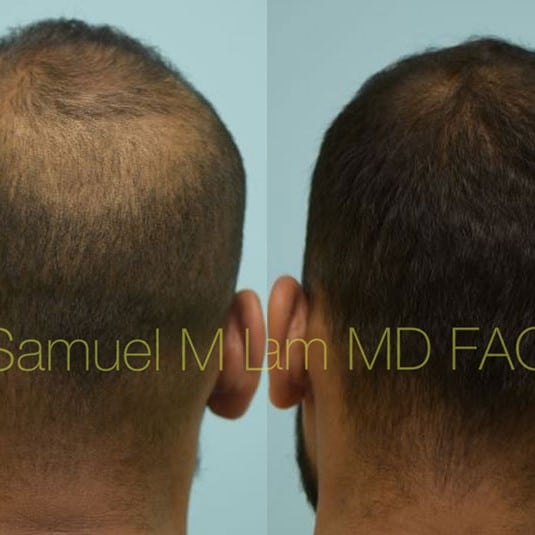
How Does Minoxidil Work?
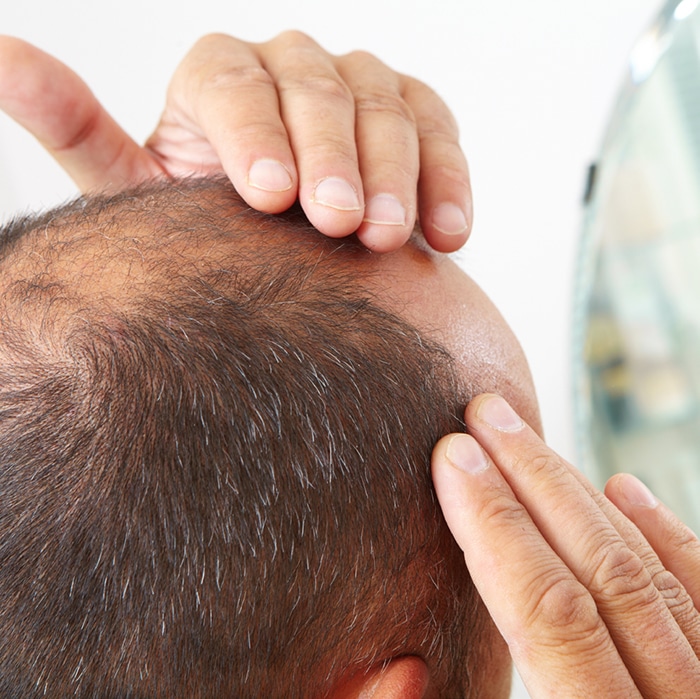
Mechanism of Action
Minoxidil is a vasodilator, which means it widens blood vessels and increases blood flow. When applied topically to the scalp, minoxidil works by increasing blood flow to the hair follicles, which in turn stimulates hair growth. It does this by opening up potassium channels in the cells of the hair follicles, which causes them to become more active and enter the anagen (growth) phase of the hair growth cycle.
That being said, the exact mechanism of action of minoxidil is not fully understood. However, it is believed to be related to adjusting the length of the anagen (active growth) phase. In addition, minoxidil is converted into a salt called minoxidil sulfate by a scalp enzyme called sulfotransferase. This salt is thought to be the active form of minoxidil that stimulates hair growth.
Effects on Hair Growth
Minoxidil works best for growth at the crown and vertex of the scalp. It isn’t ideal for regrowth at the hairline. You’ll want to pay close attention to those areas at the top of the head where thinning hair will appear fuller after a lengthy minoxidil regimen.
Results of minoxidil vary from person to person. Generally speaking, it takes about 8 weeks of consistent use to start to see results with minoxidil. After 4 months of use, you should start to see significant hair regrowth. However, it’s important to note that minoxidil is not a cure for hair loss. If you stop using minoxidil, your hair will start to thin again.
It’s also worth noting that minoxidil can cause shedding in the first few weeks of use. This is normal and is a sign that the hair follicles are entering the anagen phase. Shedding should stop after a few weeks, and you should start to see new hair growth shortly thereafter.
Possible Side Effects of Minoxidil
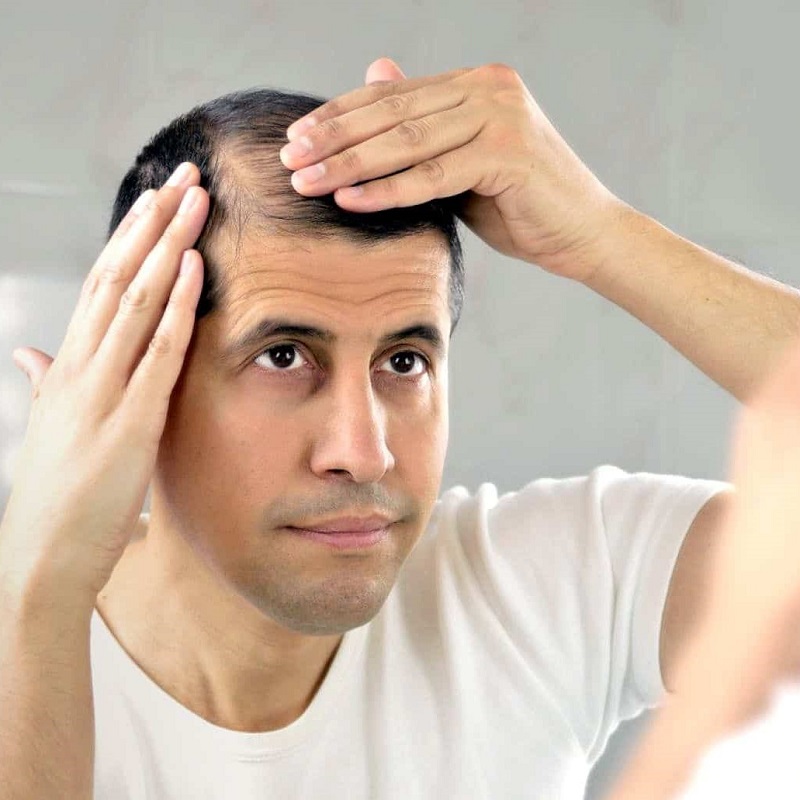
As with any medication, there are potential side effects associated with the use of minoxidil. While most people tolerate the drug well, some may experience adverse reactions. It’s important to know what to look out for and to talk to your doctor if you experience any of the following:
- Itching or skin rash
- Burning of the scalp
- Facial hair growth
- Increased hair loss
- Inflammation or soreness at the root of the hair
- Reddened skin
- Swelling of the face
- Acne at the site of application
Less commonly, minoxidil may cause numbness or tingling of the hands, feet, or face, as well as bloating, flushing, or redness of the skin. In rare cases, users may develop a skin rash and itching, or experience salt and water retention or pericardial effusion, which is the accumulation of fluid around the heart.
If you experience any of these side effects, it’s important to contact your doctor as soon as possible. They may recommend that you stop using minoxidil or adjust your dosage to minimize the risk of further complications.
It’s also worth noting that while minoxidil is generally safe for most people, there are certain groups who should avoid using the drug altogether. Pregnant or breastfeeding women, for example, should not use minoxidil, as it can be harmful to the developing fetus or nursing infant. People with heart disease or a history of heart problems should also avoid minoxidil, as it can lower blood pressure and cause further complications.
How to Use Minoxidil
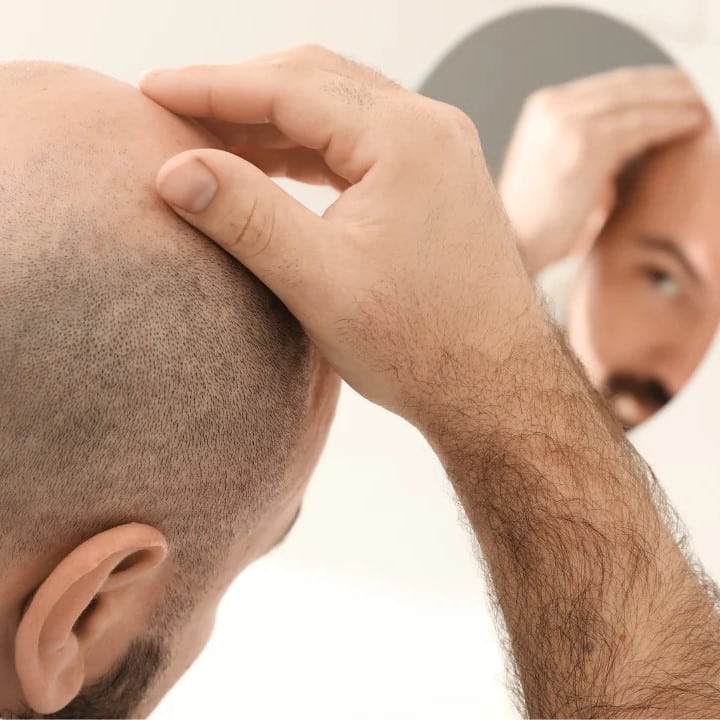
Application Techniques
Before applying minoxidil, it is important to clean and dry your scalp. You can apply minoxidil to damp hair, but it is recommended to towel or blow-dry your hair first. Use the dropper or spray applicator to apply the solution or foam directly to the scalp in the areas where you are experiencing hair loss.
Massage the minoxidil into your scalp with your fingers and avoid washing your hair or getting it wet for at least four hours after application. This will allow the minoxidil to be fully absorbed into your scalp and hair follicles.
It is important to use minoxidil consistently and as directed by your doctor or the product label. Results may take several months to become noticeable, so be patient and continue using the product as directed.
Dosage and Frequency
The recommended dosage for minoxidil varies depending on the product and the severity of your hair loss. For most products, the recommended dosage is 1 milliliter applied twice daily. However, be sure to read the product label and follow the instructions provided.
Using more than the recommended dosage will not increase the effectiveness of the product and may increase the risk of side effects. If you miss a dose, simply apply the next dose as soon as possible and continue with your regular dosing schedule.
Conclusion
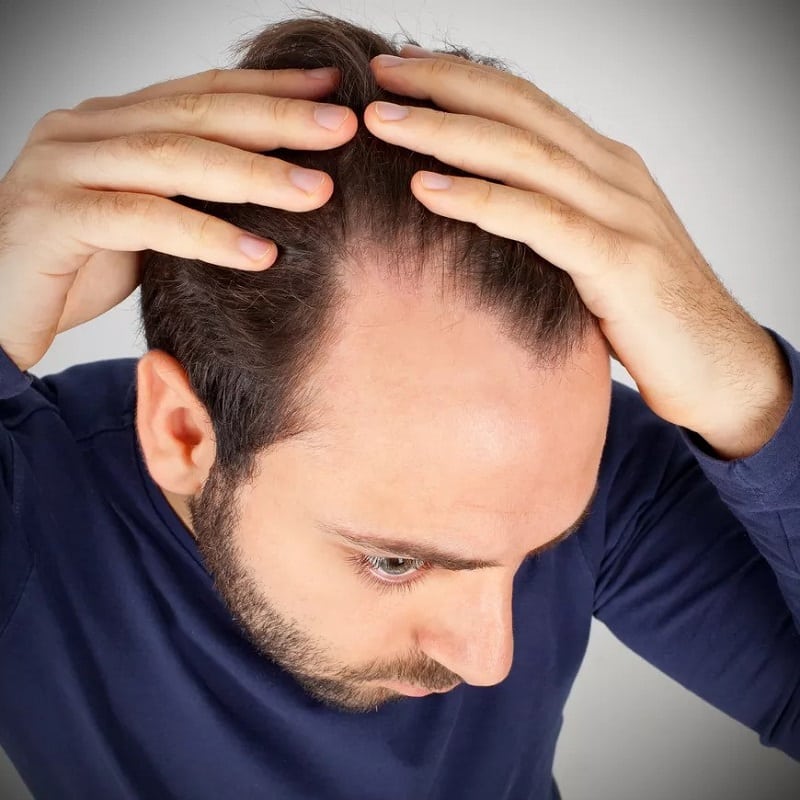
Based on my research and the before-and-after photos I’ve seen, it seems that minoxidil can be an effective treatment for hair loss in some people. While results may vary, many users have reported fuller, thicker hair after consistent use of the medication.
It’s important to note that minoxidil is not a cure for hair loss and may not work for everyone. Additionally, it may take several months of consistent use before results become noticeable. It’s also possible to experience side effects such as scalp irritation or increased hair shedding during the initial stages of treatment.
It’s always a good idea to consult with a healthcare provider before starting any new medication or treatment. They can help determine if minoxidil is right for you and provide guidance on how to use it safely and effectively.
Looking for more before and after comparisons? Check out these similar articles:


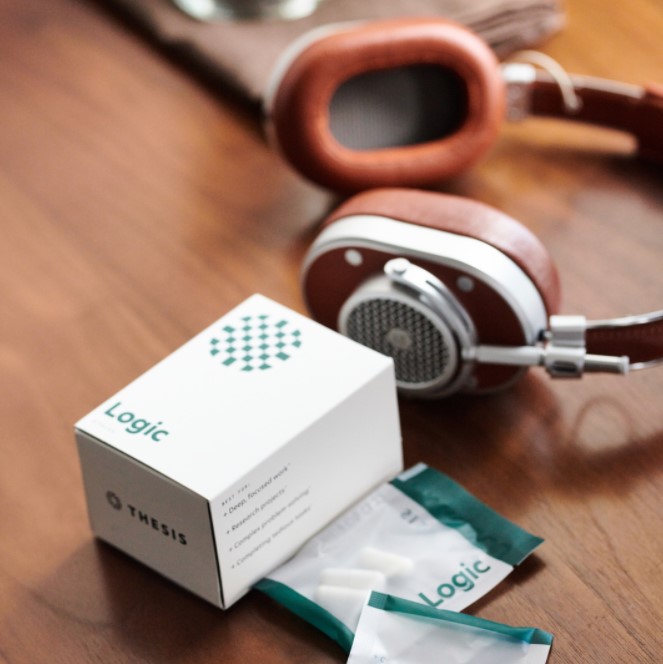
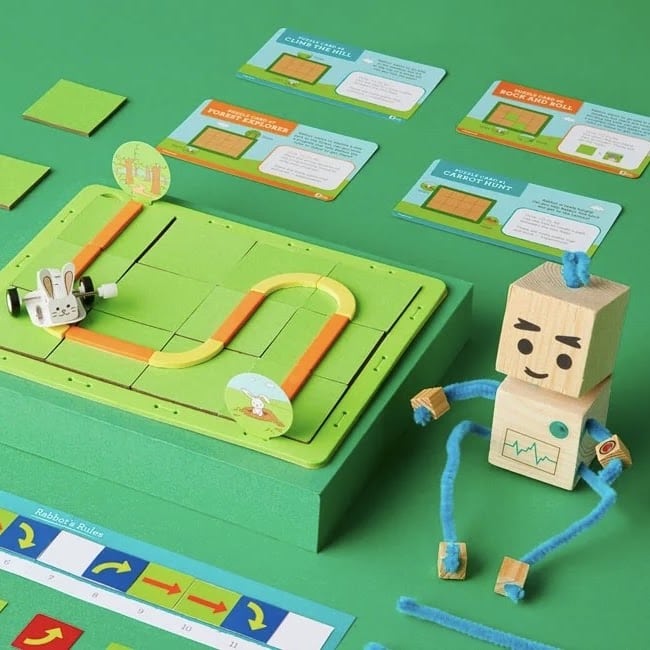
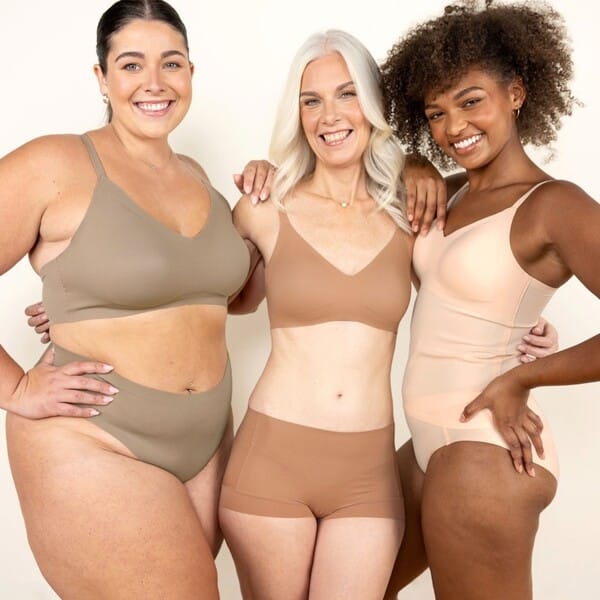
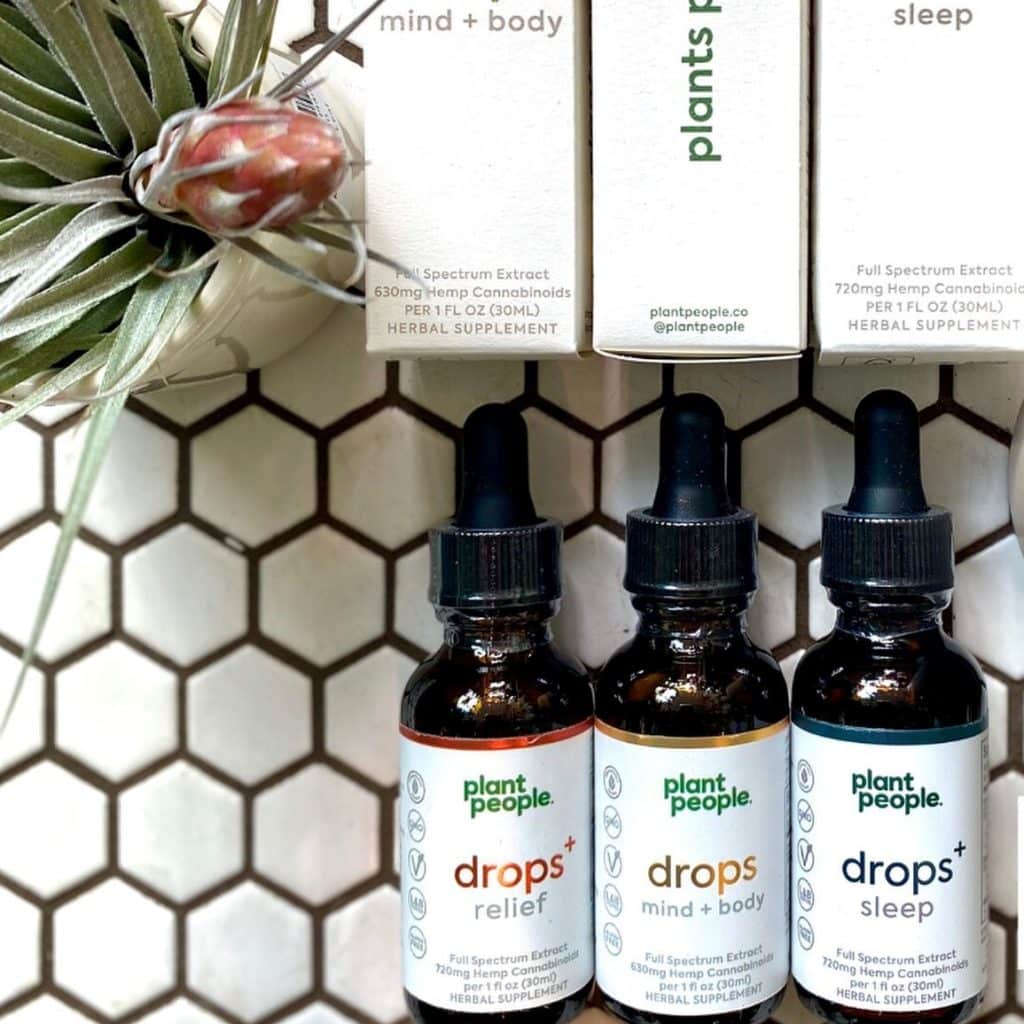
Ask the community or leave a comment
WRITE A REVIEWCustomer Reviews
Leave a review